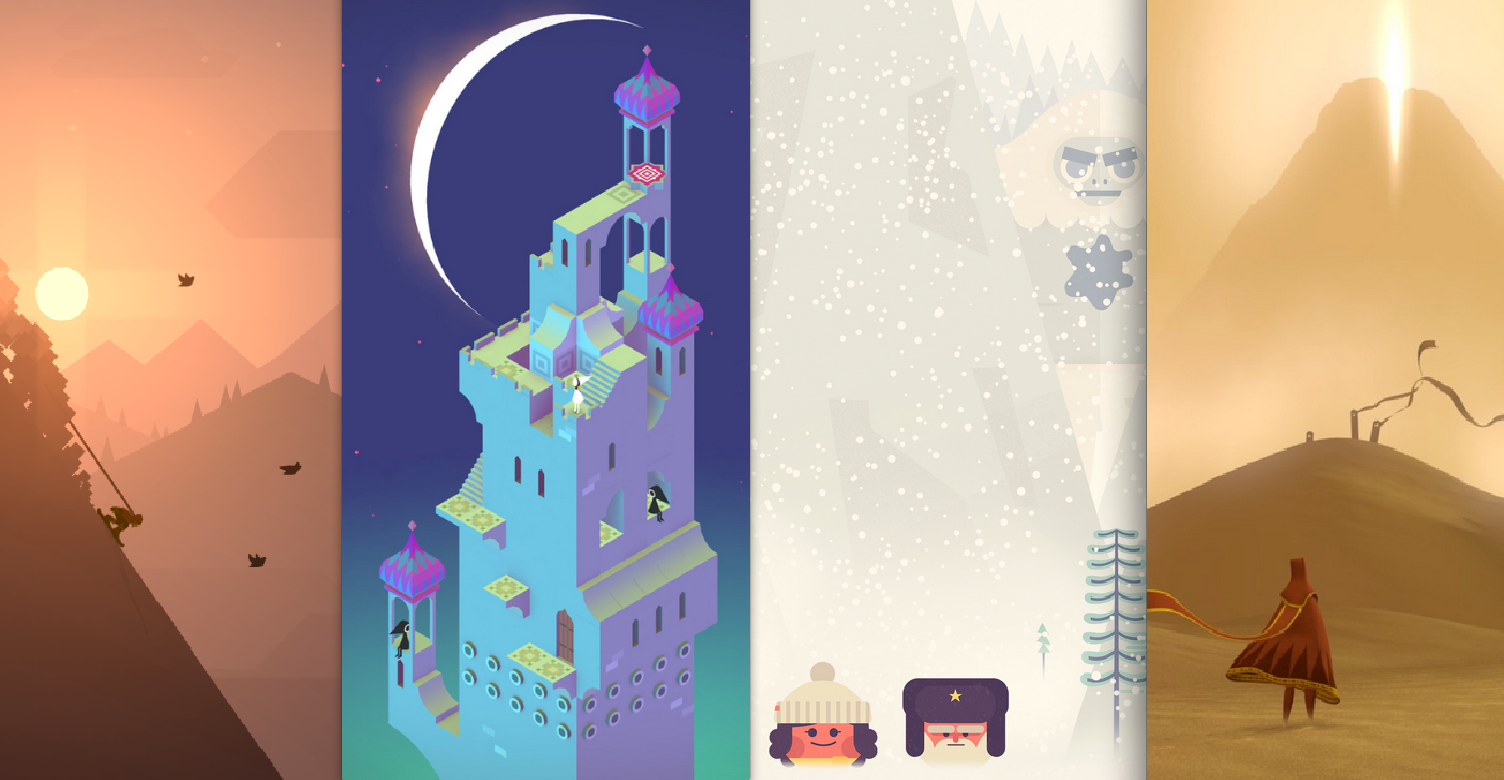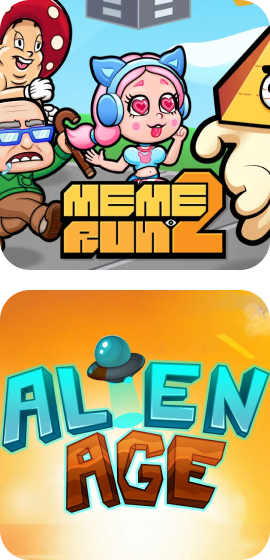Six Easy Hacks to Create a Compelling Story for Your Game (Even if You’re a Terrible Writer)

So you’ve decided to build a game. You have your genre, gameplay loop, visual theme, and monetization strategy down pat. All you need to do now is sit down and start writing… the story.
Yes, the story. Yes, even if you’re not working on an RPG, visual novel, or point-and-click adventure game. And yes, even if your game’s a simple platformer, or multiplayer FPS.
Story’s more important to a game than you think. It’s easy to look at the often toxic backlash against story-focused video games (especially with so-called “walking simulators”) and conclude that narrative must be a new thing in gaming, and, therefore—by extension—that both are mutually exclusive. Quotes like John Carmack’s infamous quip likening stories in games to stories in porn certainly don’t help, either.
With all due respect to Mr. Carmack (and none to toxic players who can’t fathom the existence of games that don’t cater to their exact tastes), this is totally bogus thinking. Video games and stories are intertwined, and they have been since the medium’s earliest days.
Decades before insecure fanboys started wailing against the developers of “walking simulators” for centering story and leaving out challenge, competition, and “traditional” gameplay, Sierra and LucasArts adopted the exact same approach for their point-and-click adventures. Not only have these titles’ pedigrees as “video games” never been called into question, players of a certain age consider them essential, “must-play” entries in the gaming canon.
Even before then, text-based adventures like Zork were bestsellers as far back in 1976. And going back even further, the tabletop games which directly preceded video games were story-centered as well. Even Chess, the grandaddy of modern board games, is an abstraction of a medieval power struggle.
True, a game should primarily be a game—you should never elevate narrative at the expense of the gameplay that makes your game fun to play. It’s also true that several early gaming classics got away with either a basic story or no story at all, yet weren’t any less fun for it (Super Mario Bros. Comes to mind).
That said, if you lack the AAA-scale budget required to create hyper-realistic, 8K ray-traced, sprawling open worlds, the easiest and most effective vehicle to immerse your players into your game is its narrative. A good story is also a sure-fire way to ensure players find the experience of playing your game meaningful, and will remember it for years (even decades) afterwards.
If you don’t believe me, look at every Game of the Year award throughout the past ~15 years, and notice how many of them cite these games’ well-crafted stories.
But… there’s a problem.
You’re not a “writer.” You haven’t written a story since your high school English class. Dammit, Jim, you’re a coder/designer/producer/etc., not a narrative guy!
Well, don’t despair! For I am here to give you a few storytelling “hacks” that will give your game’s narrative a huge creative jolt, yet are accessible enough that literally anyone can use them. Best of all, these hacks are either free, or incur a trivially nominal cost.
1. Remember Your Three “3”’s
These are your 3 Essential Story Elements, 3 Act Structure, and 3 Style Essentials.
The 3 Essential Story Elements are Setting, Characters, and Plot.
Setting simply means “world.” The world your story takes place in—whether it’s our current, present-day world, our world in another past or alternate era, or a galaxy far, far away.
Characters are the agents which figure into your story. Whether they’re protagonists, antagonists, foils, NPCs, humans, elves, aliens, or whatnot, building believable characters is essential to writing a good story.
Plot is the story itself—the sequence of events that leads to your protagonist (lead character) achieving their goal.
The 3 Act Structure is the simplest, most hassle-free way to structure your plot. You divide your story into three acts: Introduction (Act 1), Conflict (Act 2), and Resolution (Act 3). As the story progress, the plot’s main conflict gradually escalates until it reaches the climax at the end of Act 2 / beginning of Act 3 (in a video game, this would be the final boss fight). Once the climax is resolved, use the remainder of Act 3 to quickly wrap up the story.
The 3 Style Essentials will help you write simple, clear, and believable dialogue, exposition, and even UI prompts. The 3 Style Essentials are Voice, Tone, and Readability.
Voice refers to how different characters talk. Think about it. Some stuffy and posh aristocrat is going to speak very differently than a salt-of-the-earth factory worker, even if they’re speaking the same language. Hence, they speak with different voices.
Tone refers to how a single character speaks in a particular context. I’m going to assume you don’t speak to your grandmother the same way you speak to your friends. You speak to each in a different tone.
Readability is simply remembering to write in a way that sounds true to the character, and accessible to the reader—not to make yourself sound smart. To test this, have a friend read your script. If they have to pull out a dictionary at any point, your writing’s not readable enough.
BONUS HACK: If you’re writing in English and are struggling with writing more simply or concisely, try and use words with Germanic roots instead of Latin roots. To illustrate, we’ll use a popular nursery rhyme:
“Row, row, row your boat, gently down the stream…” [Germanic Roots]
“Propel, propel, propel your vessel, delicately across the estuary basin…” [Latin Roots]
See the difference? Now, this tip applies to English speakers, because English is a Germanic language. If you’re writing in another language, then make sure you choose words from the same language family.
2. For Worldbuilding, use World Anvil and Inkarnate
There is no writer worth their clicks that isn’t concerned with setting. And setting is one of those things that sounds really easy, but is actually really hard to do correctly.
Regardless of what setting you’re building—fantastical, realistic, or anywhere in between—you must always ensure that the world you create is internally consistent.
As an example: if you’re building a megalopolis in the desert, you’d better be able to explain (at least to yourself) how said city makes sure its population has enough to drink. Do they tap into an aquifer? If it’s a coastal city, does it have rows of desalination plants? Does it import water by the truckload, or pipe it in from elsewhere in the realm? Based on the recommended daily water consumption of 8 cups per day, how much water would it need to sustain a population of 20 million? What ramifications does this have to the city’s economy? What happens when the water exporter experiences a severe drought or political instability, and stops exporting this water? What political and military apparatus is in place to deal with potential unrest? Is there a precedent for such an event in the city’s history?
…it’s a lot to think about, isn’t it? Fortunately, while you DO have to think about these things, you DON’T need to include them all in your game. In fact, you should only bring in around 4% (ideally) to 10% (max) of the world you create into your game.
Still, if the very thought of hashing out these details is giving you a headache, fear not! Here are three hacks for you to try out:
First: Get organized. There are dozens of world building checklists and worksheets that’ll make sure you think of everything you need to think of. World Anvil is my go-to, but if you’re a minimalist, all you TRULY need is a pen and paper (or word processor).
Second: Create a map. Don’t underestimate how useful this is. Actually SEEING your world will give you a visual reference point for all your world building. And as a bonus, you can reuse your map as an asset in your game! Not a cartographer? Sign up for Inkarnate—creating a map has never been easier.
Third: Play Civilization. Pick a random map, random opponents, and random settings. Then, after each turn, write down a historical chronicle of what happened with your fictional civilization. By the time you reach the endgame, you’ll have a full-fledged timeline that can serve as your lore anchor.
3. For Character Creation, use a Tarot Deck
Ok, now hear me out here. I know this sounds a little woo-woo coo-koo. Whether or not you believe in the Tarot as a tool of divination is entirely up to you. Regardless, it doesn’t change the Tarot’s power and versatility when it comes to character creation.
Why does the Tarot work so well for characterization? Because it’s based on archetypal imagery. Archetypes like the Fool, the Wizard, and the Ruler transcend cultural and temporal barriers, appearing in mythologies and folklore throughout the world, through the eons.
So, how do you use the Tarot to create characters? Well, first you need to study up on the Tarot, because its imagery is very much wide open to interpretation, and can be hard to decipher at first.
Once you’ve got a good feel for it, lay out 8 cards, starting with the first card in the middle, then forming a counter-clockwise circle with the rest. The cards are as follows:
- What ties them to the story (love, money, revenge, etc)
- Their hobbies
- Their greatest desire
- Their biggest fear
- Their greatest strengths
- Their goal(s)
- Their shadow side
- Their biggest weakness (or internal obstacle)
Presto! By the way, feel free to adopt this draw to suit your style. For instance, combining Tarot with astrology is another popular method. None of this advice is set in stone, so make sure whatever you’re using works for YOU.
4. For Plot, use Story Cubes/Cards
Ok, so you’ve got your characters, and you’ve placed them in a setting. Now, what to do with them? Well, if you’re telling a story, you place them in a situation where they want something, but some external (or, sometimes, internal) force is preventing them from obtaining it. Bonus points if overcoming said obstacle involves your character(s) reckoning with or overcoming one of their flaws, traumas, or other shadows.
Really, as long as you’ve structured your plot properly (say, according to the 3 Act Structure I mentioned earlier), then it’s just a matter of placing your character in different situations where they have to overcome obstacles by way of personal growth.
But if you don’t know WHAT situations would work, try using story cubes to jog those creative juices. These are dice with cute little pictures on each side. Roll these dice, and try building a plot out of all the pictures you roll.
You may not end up using all (or even most) of them, but this is a great way to get started—or to break out of a rut down the line.
5. For Outlining, use Twine
I won’t say anything to you gifted writers who can just sit down and hammer out a novel from start to finish. You can simply skip ahead to the next entry.
But for those of us who aren’t that talented and need to plan and outline their stories in advance, let me let you in on something: Twine is your best friend.
Twine is a game engine built for narrative-driven, interactive-fiction type games. Think branching narratives, “Choose Your Own Adventure,” that sort of stuff. It’s not the only such engine, and it can be VERY buggy and temperamental. But it does have one feature to rule them all: VISUALIZATION.
Yes, with Twine, you can visualize your sequence of scenes—branches and all—with the click of a button. It’s an incredibly helpful feature, especially if you’re more of a visual person, or the narrative’s getting too complicated to follow through text alone.
Best of all, it’s free!
6. To get good at narrative, play a TTRPG
This here is the biggest hack for all you budding interactive storytellers: if you want to learn narrative design—like, REALLY learn it—play a tabletop roleplaying game. Think D&D, Call of Cthulhu, Star Wards, etc.
Better yet, become a DM/GM, write a campaign, and execute that campaign from start to finish.
Seriously. It’ll teach you EVERYTHING you need to know about narrative design.
It’ll teach you about world building. And characterization. And story structure. And most importantly, it’ll quickly get you used to the reality that players will almost never do what you expect them to do—and give you the tools to anticipate and adapt to this.
So if you’re serious about becoming a narrative designer, get thee to a D&D Discord server (or inquire at your friendly neighborhood game store) and start roleplaying!
(Oh, and actually create a narrative-driven game. You can do it with Twine in a matter of hours. There’s no substitute for experience.)
—
Want more storytelling tips? I am collaborating with my fellow writers at IGA to host a panel that’ll cover everything writing—characters, setting, plot, actually writing the script and UI, and game-specific narrative trends like environmental storytelling. To stay tuned, be sure to sign up for the IGA mailing list!



